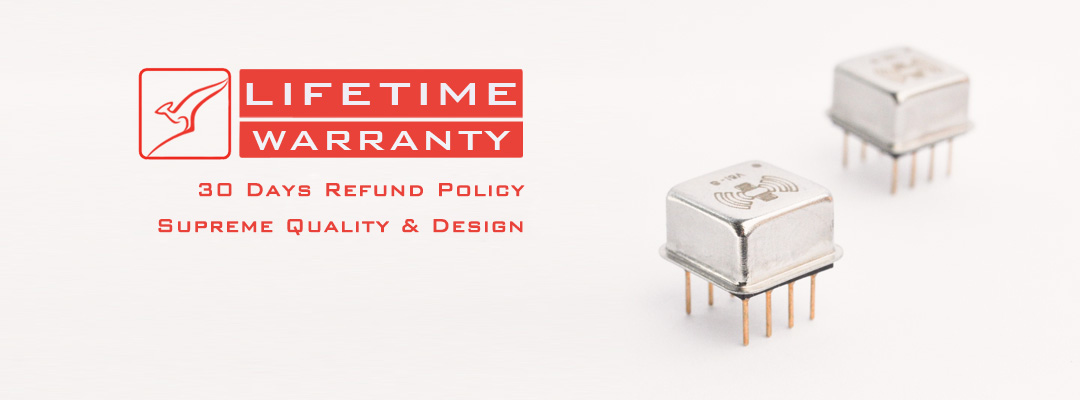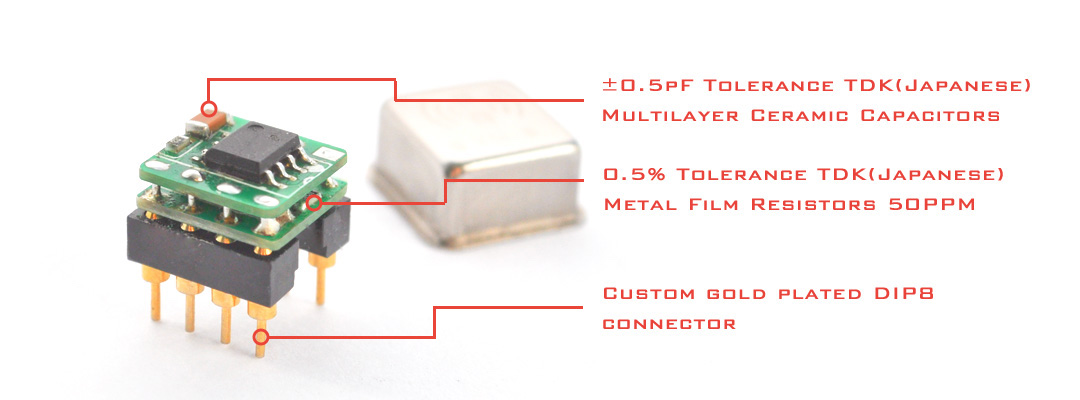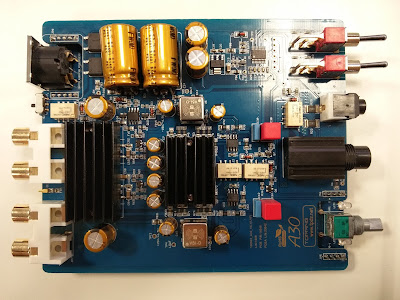Disclaimer:
I received the Burson V5i opamp free of charge in exchange for an honest review and feedback. I have no connection to Burson

Preamble / Equipment used:
I bought the Little Dot 1+ amp a couple of years ago as I was interested in exploring the ‘tube’ sound. The LD1+ amp had stella reviews. Combining an upgradable opamp and the capacity to try different tubes all whilst remaining affordable made it a perfect choice. One thing I wasn’t expecting was just how great a sounding amp the LD1+ is, even in its stock set up! I spent a long time trying many different tubes finally settling on one tube that seemed to offer by far the most balanced and superior sound of all the tubes I tried, the
6HM5 EC900 EI Yugoslavia – Platinum.
As I am most familiar with these tubes I used them for the reviewing process although I also tried other tubes with different sonic qualities to verify my thoughts in relation to the unique qualities of the V5i opamp.
In terms of headphones I mainly used the Sennheiser HD 540 Ref 1 as I have had more time with this headphone than any other. Again, I also tried many other headphones to clarify my thoughts on the qualities of V5i
I mainly used the iBasso DX80 line out for input and on occasion the Cowon i9
For testing audio components I use many albums, too many too list! but ranging in quality from
Vinyl 24-192, DSD, 24-192 Digital, 24-96 and some Flac 16-44. Classical to Hip Hop!
Essential I try to cover all the bases!

Assembly:
Fitting the opamp is quite easy. The amp is easily accessible by unscrewing the screws on the end of the amp. Once the insides are accessible, gently prying up the opamp gives access to the seat of the opamp. Making sure the amp is the right way round fitting is very easy.
One thing I did notice is how easy and perfectly the V5i opamp connects. It feels professionally made, much more so than the opamp the LD ships with.
(You can see the V5i Opamp sitting nicely just below the yellow rectangular 'Tenta' thingy!)

First Impressions:
My immediate thoughts, ‘straight out of the box’ were of an obvious immediate increase in quality. What came across in the first few minutes even, was how much richer, louder and ‘meaty’ the V5i was. The mix had more authority and a better balance.
Burn In:
I noticed the first big change after approximately 60 hours of burn in with a further refinement after 100 hours
In Brief:
Burson have created an opamp that is tuned not to ‘show off’ but to allow the player, amp and headphones to give the best they have. In other words the V5i is tuned with great skill, care and a deep understanding and appreciation of music.
The V5i offers a balanced sound in the sense that it allows everything an equal share, the highs, mids and the lows with a touch of warmth in the low end and also gives exceptional instrument separation and accurate soundstage placement.
Very much an upgrade from the stock opamp of the Little Dot 1+ The V5i shares and in some areas, sometimes even surpasses the qualities of well known high end opamps such as Sabre, Burr Brown and the OP687
In Detail:
The V5i opamp had around 160 hours burn in. Initially I found the low end to have a warmth that I found a little invasive over all and perhaps a little loose and unfocussed. After 60 hours of burn in and use this tightened up nicely and after the 120 hour mark this was improved further until finally any initial 'issues' I had disappeared
The ‘Highs’
The treble is just spot on, never sibilant yet always delightfully clear. Its hard to say much about the highs as they just . . . work! They have what I would consider a ‘reference’ quality in terms of their accuracy. Importantly they work perfectly in relation to all the other frequencies presented in the music
The ‘Mids’
I feel similar to the mids as to the highs, they are tuned sympathetically in such a way that vocals, both male and female are always clear in the mix and come across as natural and real. They can be a little forward but not in a way that is unsympathetic. I would be hard pressed to fault them
The ‘Low End’
In general the low end is impeccably behaved presenting the bass that is present in the mix. What is also impressive is the quality and balanced restraint. On classic ‘bass’ tracks such as ‘Royals’ by Lorde the low end offers a perfect middle ground of having that big low end sound without exaggerating it, allowing a detailed and organic bass. Very impressive to hear
Soundstage:
The soundstage is presented as it is in the recording. Because of the superb detail retrieval of the V5i everything is clearly positioned where it should be and in its own place.
Sometimes with audio and audio components certain ‘studio type tricky’ is used to make something apparently sound 'better' to the inexperienced ear than it actually is. Burson Audio I find refreshingly pure and honest in their creation and tuning of the V5i opamp
Instrument Placement:
A very impressive aspect of the V5i is how everything in the mix has its own clear place, all of which is clear and detailed. With some albums it seemed the V5i almost magically ‘sorted out’ bad mix’s!
All Together:
I should begin by saying though that I have a definite sense that Burson have, somewhat humbly, got themselves ‘out of the way’ and tuned their V5i to allow the recording, the player, the headphones to do what they do best. A sign of a company that is manned by true music lovers
Its nice to say but I’m not sure whether the V5i is a bit too good! in the sense that it truly reflects the quality of audio you feed to it so if you listen to badly mixed poorly compressed audio then that is exactly what you will hear
As such the following points should be taken not as big faults but more as subtle flavours that someone such as myself, who enjoys and seeks audio perfection has noticed. The V5i opamp is a very, very good chip.
The first aspect of the opamps sound that I noticed was how the highs, mids and low end all seem to get an equal footing in the presentation of the audio. Combined with a touch of warmth in the low end this sometimes creates something of a paradox (although only with certain albums) On the one hand you have an ‘audiophile level’ of details in the treble and the mids with a weight in the low end that holds everything together very nicely but sometimes it can be a little too much. However this is just personal taste, I don’t think of this characteristic as a fault or an issue
To look at it another way, at times I feel I’m listening to a high end HiFi tuned opamp yet other times with >better recorded albums< I had a definite Audiophile level of detail, resolution and PRaT touching at times on being close to perfection!
As I mentioned above I think this is indicative of the quality of this opamp and is not a fault
Another aspect of the V5i character which was noticeable was how much ‘louder’ it is than the stock Little Dot 1+ opamp. This amp sounds like it really wants you party with and enjoy the music. The amp delivers a very confident rich sound which on occasion leads me to turning the amp down a tad.
In Conclusion:
There is no doubt the Burson V5i is a huge upgrade to the Little Dot 1+ amp. The V5i opamp is a TOTL capable opamp that gives great detail, amazing instrument separation, a confident soundstage and an ‘equal opportunity’ for the highs, mids and lows to all have a chance to shine in the mix.
I remember reading a while back that the addition of the V5i opamp made the LD1+ into a amp that was way, way above its price point and brought it in line with some other amps costing $1000+
Is this true?
Well, I have no desire to go out and buy a $1000 amp so . . .
Im certainly very happy to now have had the chance to test this out for myself and see what everyone has been raving about
I would like to thank Carlos & Burson Audio for the opportunity to enjoy their wonderful V5i Opamp and I would like to wish them continued success in their future endeavours. I will be watching this company very closely in the future
I received the Burson V5i opamp free of charge in exchange for an honest review and feedback. I have no connection to Burson

Preamble / Equipment used:
I bought the Little Dot 1+ amp a couple of years ago as I was interested in exploring the ‘tube’ sound. The LD1+ amp had stella reviews. Combining an upgradable opamp and the capacity to try different tubes all whilst remaining affordable made it a perfect choice. One thing I wasn’t expecting was just how great a sounding amp the LD1+ is, even in its stock set up! I spent a long time trying many different tubes finally settling on one tube that seemed to offer by far the most balanced and superior sound of all the tubes I tried, the
6HM5 EC900 EI Yugoslavia – Platinum.
As I am most familiar with these tubes I used them for the reviewing process although I also tried other tubes with different sonic qualities to verify my thoughts in relation to the unique qualities of the V5i opamp.
In terms of headphones I mainly used the Sennheiser HD 540 Ref 1 as I have had more time with this headphone than any other. Again, I also tried many other headphones to clarify my thoughts on the qualities of V5i
I mainly used the iBasso DX80 line out for input and on occasion the Cowon i9
For testing audio components I use many albums, too many too list! but ranging in quality from
Vinyl 24-192, DSD, 24-192 Digital, 24-96 and some Flac 16-44. Classical to Hip Hop!
Essential I try to cover all the bases!

Assembly:
Fitting the opamp is quite easy. The amp is easily accessible by unscrewing the screws on the end of the amp. Once the insides are accessible, gently prying up the opamp gives access to the seat of the opamp. Making sure the amp is the right way round fitting is very easy.
One thing I did notice is how easy and perfectly the V5i opamp connects. It feels professionally made, much more so than the opamp the LD ships with.
(You can see the V5i Opamp sitting nicely just below the yellow rectangular 'Tenta' thingy!)

First Impressions:
My immediate thoughts, ‘straight out of the box’ were of an obvious immediate increase in quality. What came across in the first few minutes even, was how much richer, louder and ‘meaty’ the V5i was. The mix had more authority and a better balance.
Burn In:
I noticed the first big change after approximately 60 hours of burn in with a further refinement after 100 hours
In Brief:
Burson have created an opamp that is tuned not to ‘show off’ but to allow the player, amp and headphones to give the best they have. In other words the V5i is tuned with great skill, care and a deep understanding and appreciation of music.
The V5i offers a balanced sound in the sense that it allows everything an equal share, the highs, mids and the lows with a touch of warmth in the low end and also gives exceptional instrument separation and accurate soundstage placement.
Very much an upgrade from the stock opamp of the Little Dot 1+ The V5i shares and in some areas, sometimes even surpasses the qualities of well known high end opamps such as Sabre, Burr Brown and the OP687
In Detail:
The V5i opamp had around 160 hours burn in. Initially I found the low end to have a warmth that I found a little invasive over all and perhaps a little loose and unfocussed. After 60 hours of burn in and use this tightened up nicely and after the 120 hour mark this was improved further until finally any initial 'issues' I had disappeared
The ‘Highs’
The treble is just spot on, never sibilant yet always delightfully clear. Its hard to say much about the highs as they just . . . work! They have what I would consider a ‘reference’ quality in terms of their accuracy. Importantly they work perfectly in relation to all the other frequencies presented in the music
The ‘Mids’
I feel similar to the mids as to the highs, they are tuned sympathetically in such a way that vocals, both male and female are always clear in the mix and come across as natural and real. They can be a little forward but not in a way that is unsympathetic. I would be hard pressed to fault them
The ‘Low End’
In general the low end is impeccably behaved presenting the bass that is present in the mix. What is also impressive is the quality and balanced restraint. On classic ‘bass’ tracks such as ‘Royals’ by Lorde the low end offers a perfect middle ground of having that big low end sound without exaggerating it, allowing a detailed and organic bass. Very impressive to hear
Soundstage:
The soundstage is presented as it is in the recording. Because of the superb detail retrieval of the V5i everything is clearly positioned where it should be and in its own place.
Sometimes with audio and audio components certain ‘studio type tricky’ is used to make something apparently sound 'better' to the inexperienced ear than it actually is. Burson Audio I find refreshingly pure and honest in their creation and tuning of the V5i opamp
Instrument Placement:
A very impressive aspect of the V5i is how everything in the mix has its own clear place, all of which is clear and detailed. With some albums it seemed the V5i almost magically ‘sorted out’ bad mix’s!
All Together:
I should begin by saying though that I have a definite sense that Burson have, somewhat humbly, got themselves ‘out of the way’ and tuned their V5i to allow the recording, the player, the headphones to do what they do best. A sign of a company that is manned by true music lovers
Its nice to say but I’m not sure whether the V5i is a bit too good! in the sense that it truly reflects the quality of audio you feed to it so if you listen to badly mixed poorly compressed audio then that is exactly what you will hear
As such the following points should be taken not as big faults but more as subtle flavours that someone such as myself, who enjoys and seeks audio perfection has noticed. The V5i opamp is a very, very good chip.
The first aspect of the opamps sound that I noticed was how the highs, mids and low end all seem to get an equal footing in the presentation of the audio. Combined with a touch of warmth in the low end this sometimes creates something of a paradox (although only with certain albums) On the one hand you have an ‘audiophile level’ of details in the treble and the mids with a weight in the low end that holds everything together very nicely but sometimes it can be a little too much. However this is just personal taste, I don’t think of this characteristic as a fault or an issue
To look at it another way, at times I feel I’m listening to a high end HiFi tuned opamp yet other times with >better recorded albums< I had a definite Audiophile level of detail, resolution and PRaT touching at times on being close to perfection!
As I mentioned above I think this is indicative of the quality of this opamp and is not a fault
Another aspect of the V5i character which was noticeable was how much ‘louder’ it is than the stock Little Dot 1+ opamp. This amp sounds like it really wants you party with and enjoy the music. The amp delivers a very confident rich sound which on occasion leads me to turning the amp down a tad.
In Conclusion:
There is no doubt the Burson V5i is a huge upgrade to the Little Dot 1+ amp. The V5i opamp is a TOTL capable opamp that gives great detail, amazing instrument separation, a confident soundstage and an ‘equal opportunity’ for the highs, mids and lows to all have a chance to shine in the mix.
I remember reading a while back that the addition of the V5i opamp made the LD1+ into a amp that was way, way above its price point and brought it in line with some other amps costing $1000+
Is this true?
Well, I have no desire to go out and buy a $1000 amp so . . .
Im certainly very happy to now have had the chance to test this out for myself and see what everyone has been raving about
I would like to thank Carlos & Burson Audio for the opportunity to enjoy their wonderful V5i Opamp and I would like to wish them continued success in their future endeavours. I will be watching this company very closely in the future










































 It's really fun with V5i. Big midbass, full mids. You gotta try.
It's really fun with V5i. Big midbass, full mids. You gotta try.



















![IMG_20180305_191033[1].jpg IMG_20180305_191033[1].jpg](https://cdn.head-fi.org/a/10081266_thumb.jpg)
![IMG_20180305_191002[1].jpg IMG_20180305_191002[1].jpg](https://cdn.head-fi.org/a/10081263_thumb.jpg)
![IMG_20180305_191515[1].jpg IMG_20180305_191515[1].jpg](https://cdn.head-fi.org/a/10081268_thumb.jpg)

















































































